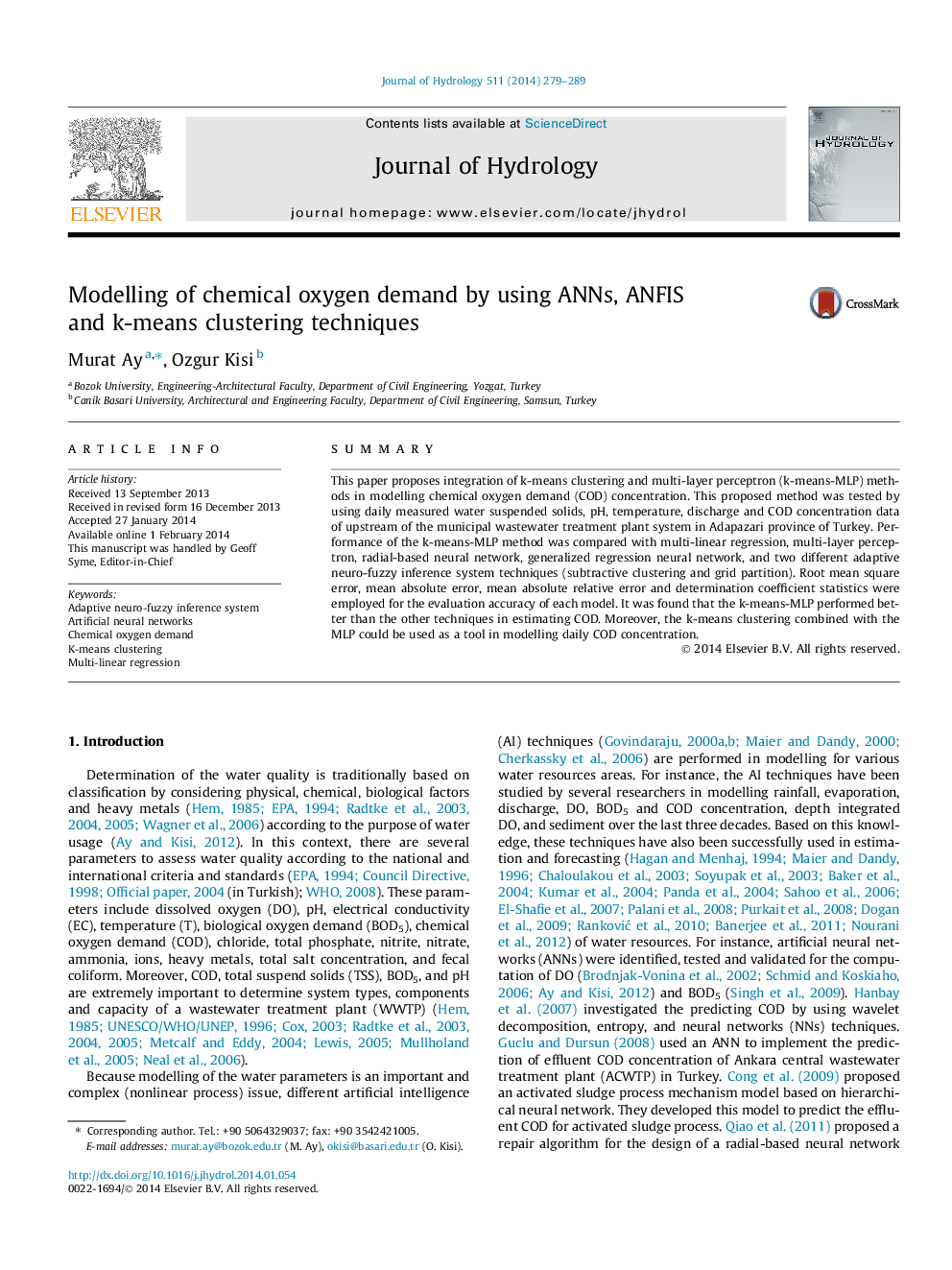| Article ID | Journal | Published Year | Pages | File Type |
|---|---|---|---|---|
| 6413291 | Journal of Hydrology | 2014 | 11 Pages |
â¢COD estimates of k-means-MLP method integrated are compared with other AI techniques.â¢The k-means-MLP method performs better than the other AI techniques.â¢SS, T and pH parameters are quite effective in estimating daily COD concentration.
SummaryThis paper proposes integration of k-means clustering and multi-layer perceptron (k-means-MLP) methods in modelling chemical oxygen demand (COD) concentration. This proposed method was tested by using daily measured water suspended solids, pH, temperature, discharge and COD concentration data of upstream of the municipal wastewater treatment plant system in Adapazari province of Turkey. Performance of the k-means-MLP method was compared with multi-linear regression, multi-layer perceptron, radial-based neural network, generalized regression neural network, and two different adaptive neuro-fuzzy inference system techniques (subtractive clustering and grid partition). Root mean square error, mean absolute error, mean absolute relative error and determination coefficient statistics were employed for the evaluation accuracy of each model. It was found that the k-means-MLP performed better than the other techniques in estimating COD. Moreover, the k-means clustering combined with the MLP could be used as a tool in modelling daily COD concentration.
